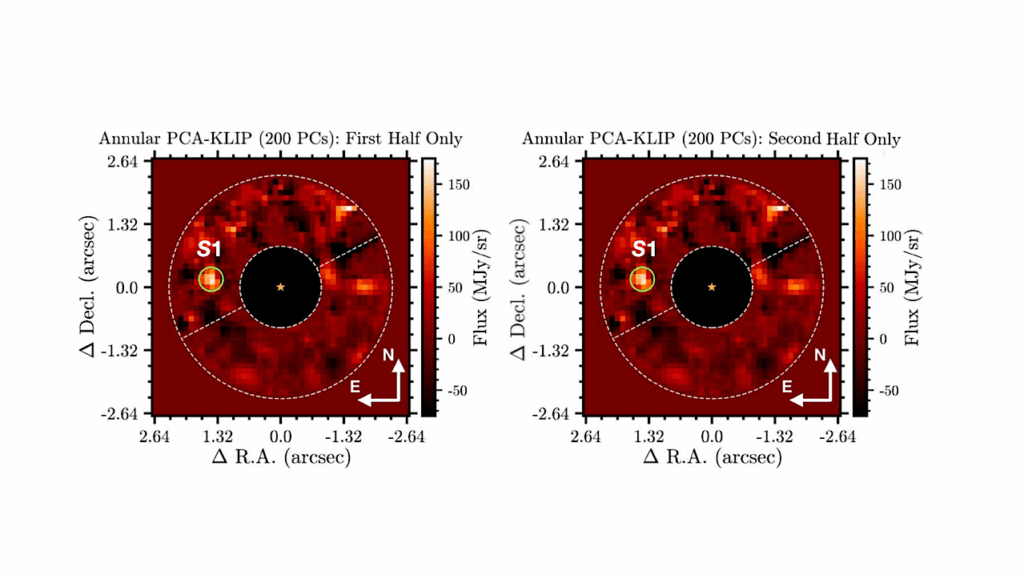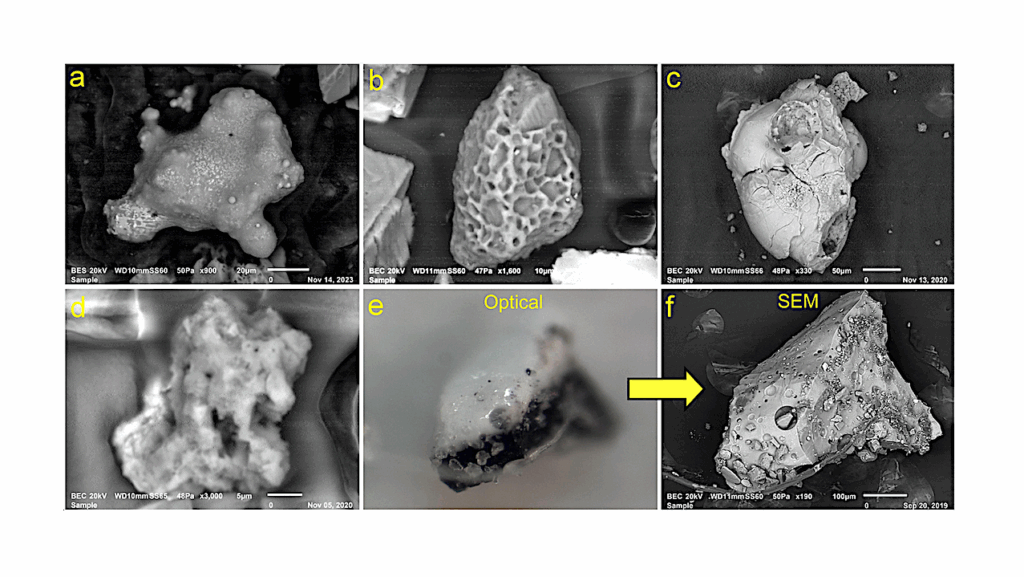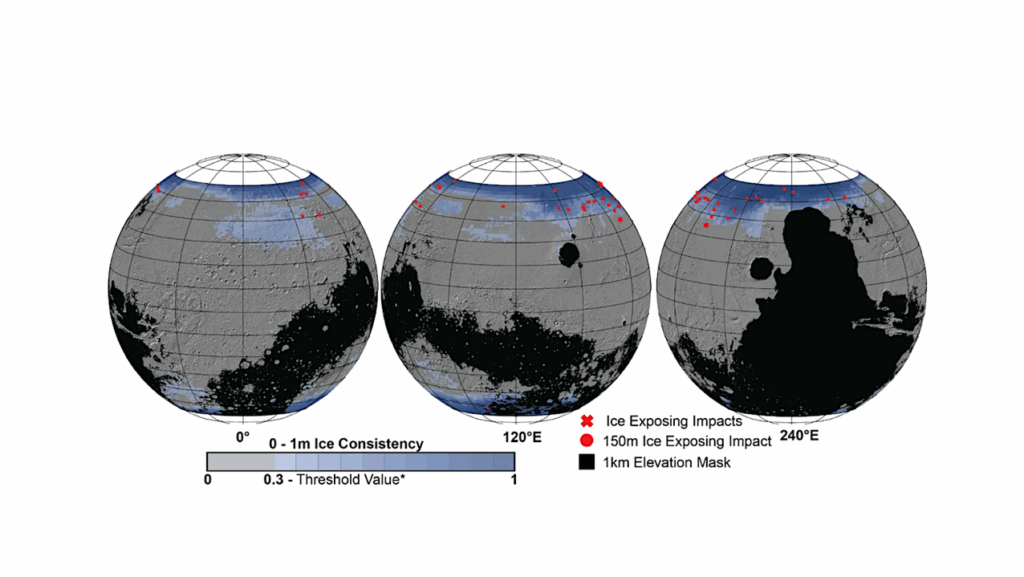North China Fossils Show Eukaryotes First Acquired Multicellularity 1.63 Billion Years Ago

In a study published in Science Advances on Jan. 24, researchers led by Prof. ZHU Maoyan from the Nanjing Institute of Geology and Palaeontology of the Chinese Academy of Sciences reported their recent discovery of 1.63-billion-year-old multicellular fossils from North China.
These exquisitely preserved microfossils are currently considered the oldest record of multicellular eukaryotes. This study is another breakthrough after the researchers’ earlier discovery of decimeter-sized eukaryotic fossils in the Yanshan area of North China, and pushes back the emergence of multicellularity in eukaryotes by about 70 million years.
All complex life on Earth, including diverse animals, land plants, macroscopic fungi, and seaweeds, are multicellular eukaryotes. Multicellularity is key to eukaryotes acquiring organismal complexity and large size, and is often regarded as a major transition in the history of life on Earth. However, scientists have been unsure when eukaryotes evolved this innovation.

TL photomicrograph of a five-celled filament with constant width and dark narrow transverse bands. (B) SEM image of (A) showing surface features and the preservation as a complete compression. Note the obliquely compressed cross wall of the right terminal cell showing smooth surface and no other particular features. (C to E) Magnifications of (B), showing smooth wall surface and the well-defined contact between adjoining cells manifested by a very shallow groove (marked by cyan arrowheads) along transverse bands. (C) and (E) represent dashed boxes in (A) and (B); (D) corresponds to the dashed box in (C). Scale bars, 50 μm [(A) and (B)], 10 μm (C), and 2 μm [(D) and (E)]. — Science Advances
Fossil records offering convincing evidence show that eukaryotes with simple multicellularity, such as red and green algae, and putative fungi, appeared as early as 1.05 billion years ago. Older records have claimed to be multicellular eukaryotes, but most of them are controversial because of their simple morphology and lack of cellular structure.
“The newly discovered multicellular fossils come from the late Paleoproterozoic Chuanlinggou Formation that is about 1,635 million years old. They are unbranched, uniseriate filaments composed of two to more than 20 large cylindrical or barrel-shaped cells with diameters of 20–194 μm and incomplete lengths up to 860 μm. These filaments show a certain degree of complexity based on their morphological variation,” said MIAO Lanyun, one of the researchers.
The filaments are constant, or tapered throughout their length, or tapered only at one end. Morphometric analyses demonstrate their morphological continuity, suggesting they represent a single biological species rather than discrete species. The fossils have been named Qingshania magnifica, 1989, a form taxon with similar morphology and size, and are described as being from the Chuanlinggou Formation.
A particularly important feature of Qingshania is the round intracellular structure (diameter 15–20 μm) in some cells. These structures are comparable to the asexual spores known in many eukaryotic algae, indicating that Qingshania probably reproduced by spores.
In modern life, uniseriate filaments are common in both prokaryotes (bacteria and archaea) and eukaryotes. The combination of large cell size, wide range of filament diameter, morphological variation, and intracellular spores demonstrate the eukaryotic affinity of Qingshania, as no known prokaryotes are so complex. Filamentous prokaryotes are generally very small, about 1–3 μm in diameter, and are distributed across more than 147 genera of 12 phyla. Some cyanobacteria and sulfur bacteria can reach large sizes, up to 200 μm thick, but these large prokaryotes are very simple in morphology, with disc-shaped cells, and are not reproduced by spores.
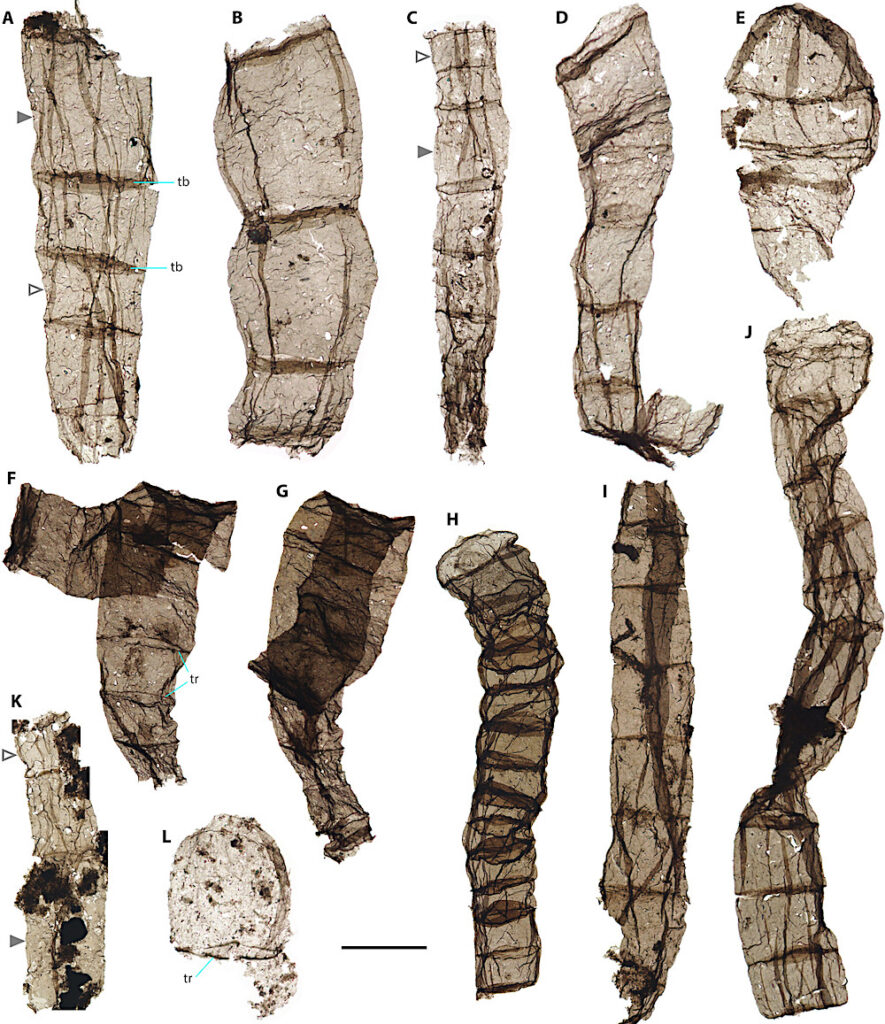
Transmitted-light (TL) photomicrographs of Q. magnifica from the Chuanlinggou Formation.
(A to D and K) Filaments with cells of varying length and width. (E) Four-celled filament with hemispherical terminal cell. (F and G) Filament with notably decreasing cell width toward one end. Note that (F) and (G) represent the same specimen; (F) lost the narrowest part of the filament as shown in (G). (H to J) Filaments displaying more uniformity of cell dimensions. (L) Two-celled filament with ovoid terminal cell. All specimens were handpicked from organic residues of acid maceration and photographed in wet mounts, except for (K), which was photographed from a permanent strew mount. Solid and empty gray triangles in (A), (C), and (K) indicate the longest and the shortest cells, respectively, within single filaments. tb, transverse band (interpreted as cross wall); tr, transverse ring (interpreted as partially preserved cross wall). Scale bar, 50 μm [(A) to (E), (I), (J), and (L)] and 100 μm [(F) to (H) and (K)]. — Science Advances
The best modern analogues are some green algae, although filaments also occur in other groups of eukaryotic algae (e.g., red algae, brown algae, yellow algae, charophytes, etc.), as well as in fungi and oomycetes.
“This indicates that Qingshania was most likely photosynthetic algae, probably belonging to the extinct stem group of Archaeplastids (a major group consisting of red algae, green algae and land plants, as well as glaucophytes), although its exact affinity is still unclear,” said MIAO.
In addition, the researchers conducted Raman spectroscopic investigation to test the eukaryotic affinity of Qingshania from the perspective of chemical composition, using three cyanobacterial taxa for comparison. Raman spectra revealed two broad peaks characteristic of disordered carbonaceous matter. Furthermore, the estimated burial temperatures using Raman parameters ranged from 205–250 °C, indicating a low degree of metamorphism. Principal component analysis of the Raman spectra sorted Qingshania and the cyanobacterial taxa into two distinct clusters, indicating that carbonaceous matter of Qingshania is different from that of cyanobacterial fossils, further supporting the eukaryotic affinity of Qingshania.
Currently, the oldest unambiguous eukaryotic fossils are unicellular forms from late Paleoproterozoic sediments (~1.65 billion years ago) in Northern China and Northern Australia. Qingshania appeared only slightly later than these unicellular forms, indicating that eukaryotes acquired simple multicellularity very early in their evolutionary history.
Since eukaryotic algae (Archaeplastids) arose after the last eukaryotic common ancestor (LECA), the discovery of Qingshania, if truly algal in nature, further supports the early appearance of LECA in the late Paleoproterozoic—which is consistent with many molecular clock studies—rather than in the late Mesoproterozoic of about 1 billion years ago.
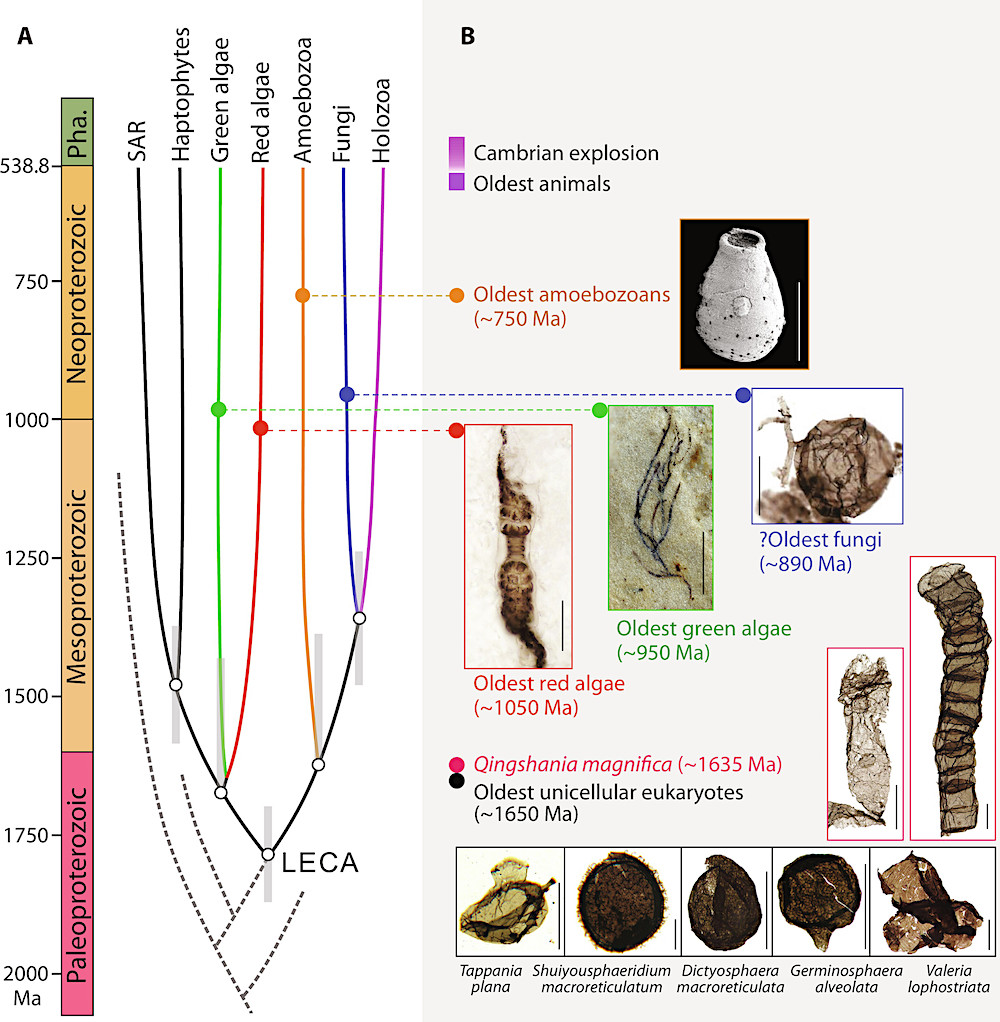
Overview of early evolution of the Eukarya along with fossil records. (A) Simplified eukaryotic tree with divergence time estimates of major branches by molecular clock study. LECA, last eukaryotic common ancestor. Dashed gray lines represent hypothetical stem-group eukaryotes, which are extinct. Tree topology and molecular clock estimates are from (67). Abbreviation: Pha., Phanerozoic. (B) Representative fossil records of early eukaryotes. The oldest unambiguous eukaryotic fossils are unicellular forms, e.g., Tappania plana and Shuiyousphaeridium macroreticulatum from ~1650-Ma Ruyang Group [images courtesy of L. Yin, reprinted from (75) with permission from Elsevier]; Dictyosphaera macroreticulata, Germinosphaera alveolata, and Valeria lophostriata from the Changzhougou Formation and lowermost Chuanlinggou Formation in North China [reprinted from (76) with permission from Elsevier]. The Q. magnifica represents the current oldest convincing multicellular eukaryote from ~1635-Ma upper Chuanlinggou Formation in North China. The oldest red alga is Bangiomorpha pubescens from ~1050-Ma Hunting Formation, Canada [image courtesy of N. Butterfield, reprinted from (5) Cambridge Univ. Press, reproduced with permission]. The oldest green alga is P. antiquus from ~950-Ma Nanfen Formation in North China [image courtesy of Q. Tang, reprinted from (7) with permission from Springer Nature]. The oldest putative fungus is O. giraldae from ~890-Ma Grassy Bay Formation in Canada [image courtesy of C. Loron, reprinted from (8) with permission from Springer Nature]. The oldest amoebozoans are vase-shaped microfossils, e.g., Cycliocyrillium torquata from ~750 to 730 Ma Kwagunt Formation, Chuar group in Arizona [image courtesy of S. Porter, reprinted from (79) Cambridge Univ. Press, reproduced with permission]. Scale bars, 500 μm (the image of the oldest green algal fossil equals) and 50 μm (the rest). — Science Advances
This study was funded by the National Key Research and Development Program of China, the National Natural Science Foundation of China, and the Innovation Cross-Team of CAS.
1.63-billion-year-old multicellular eukaryotes from the Chuanlinggou Formation in North China, Science Advances (open access)
Astrobiology



